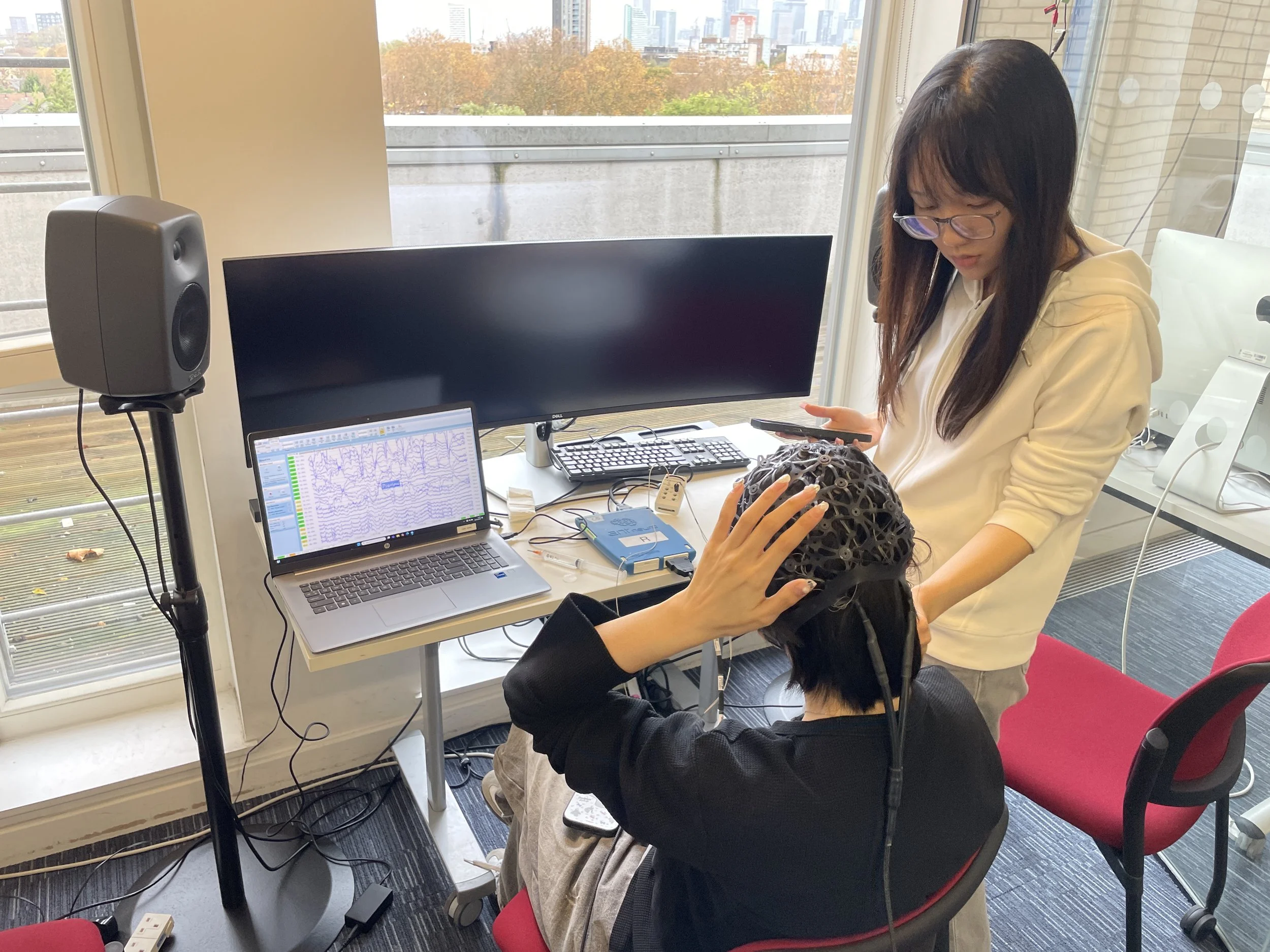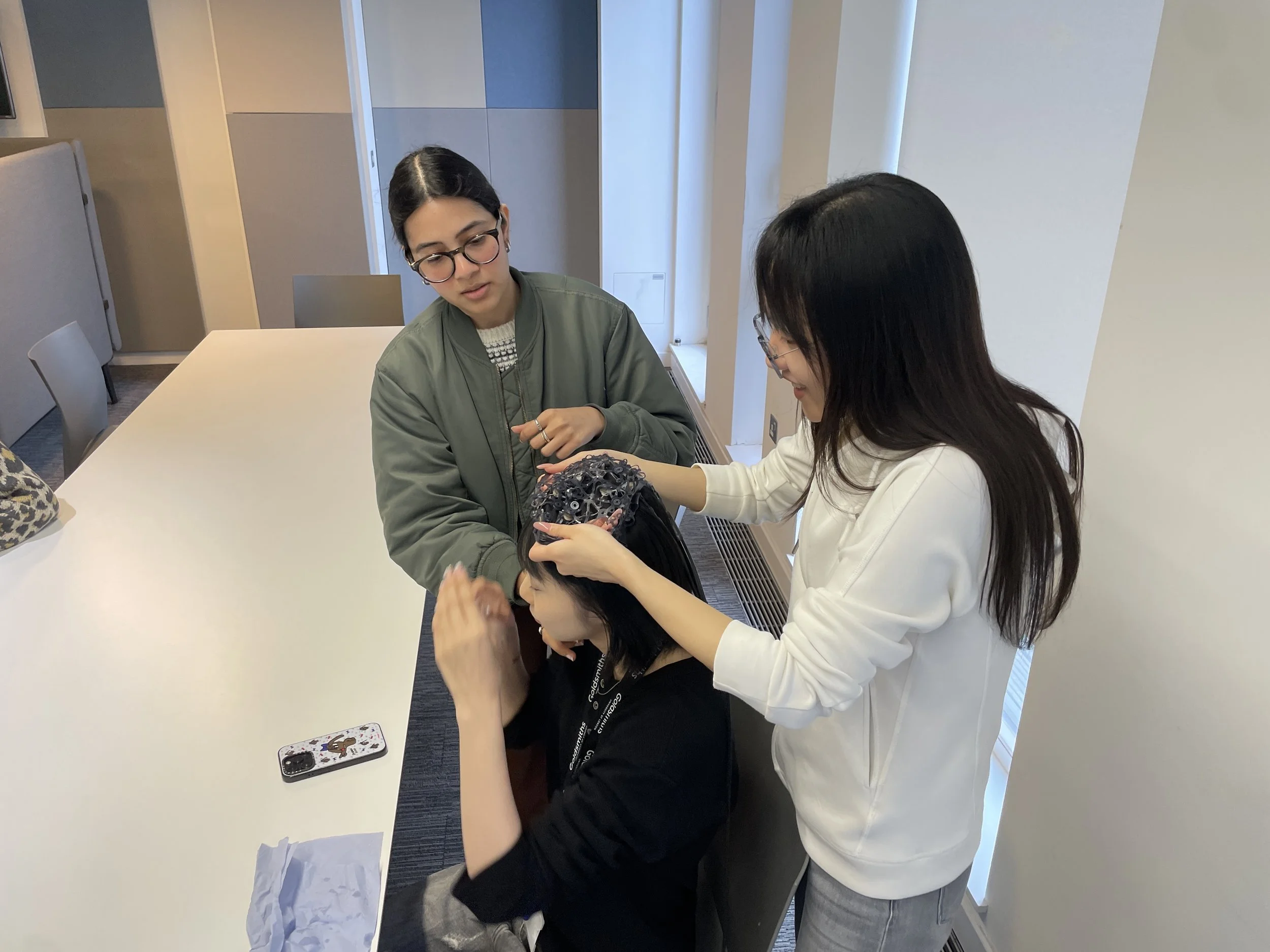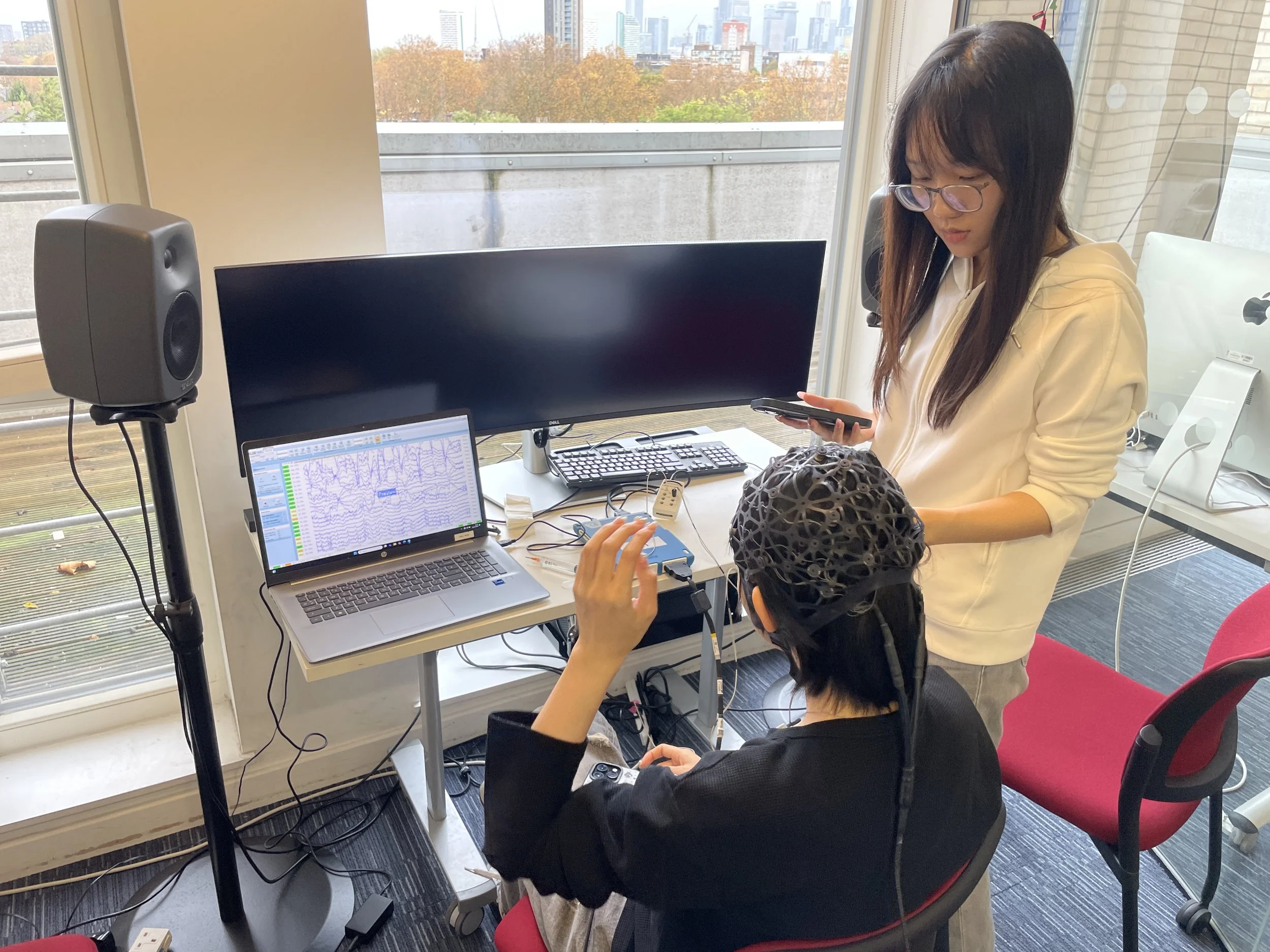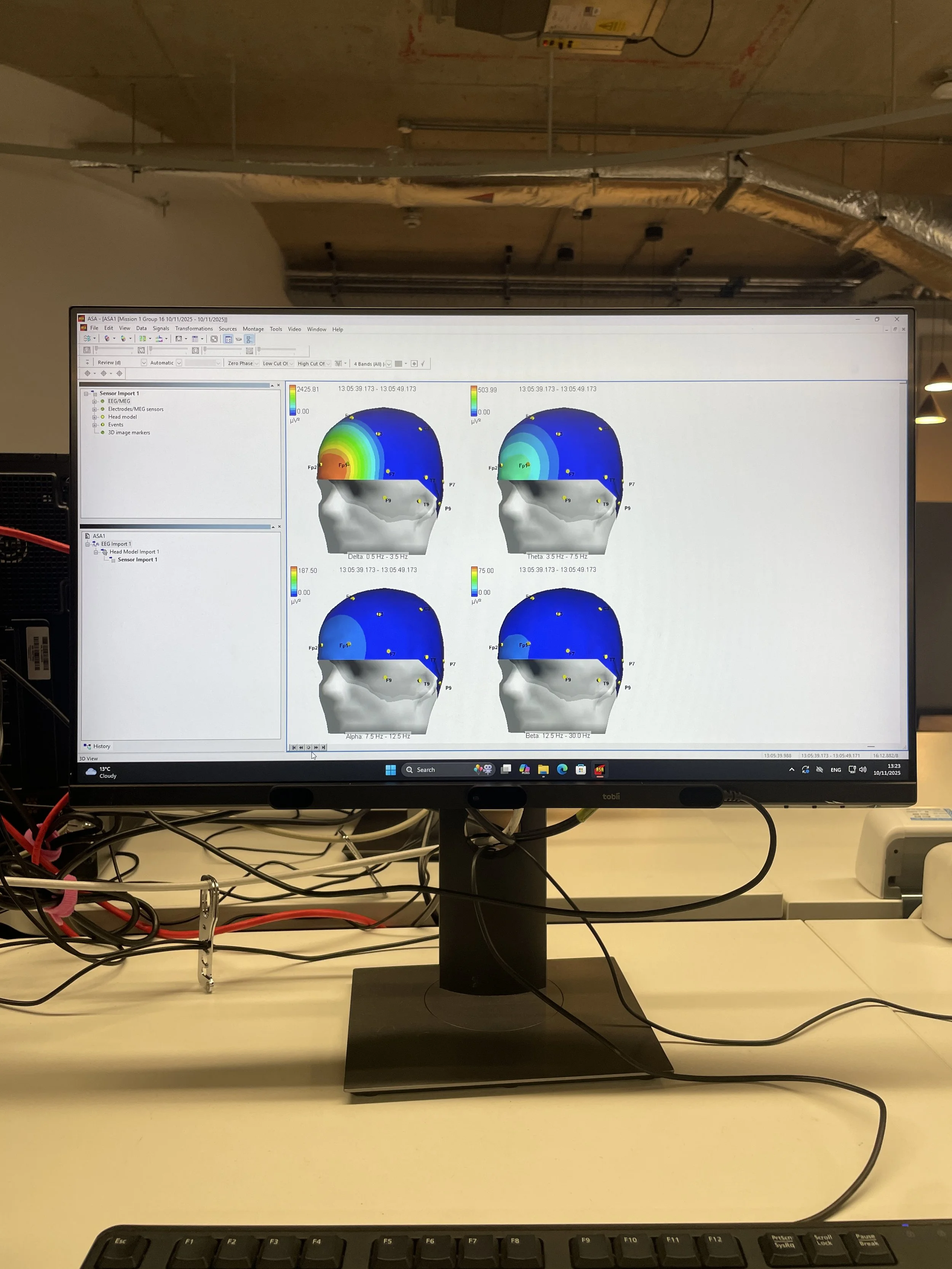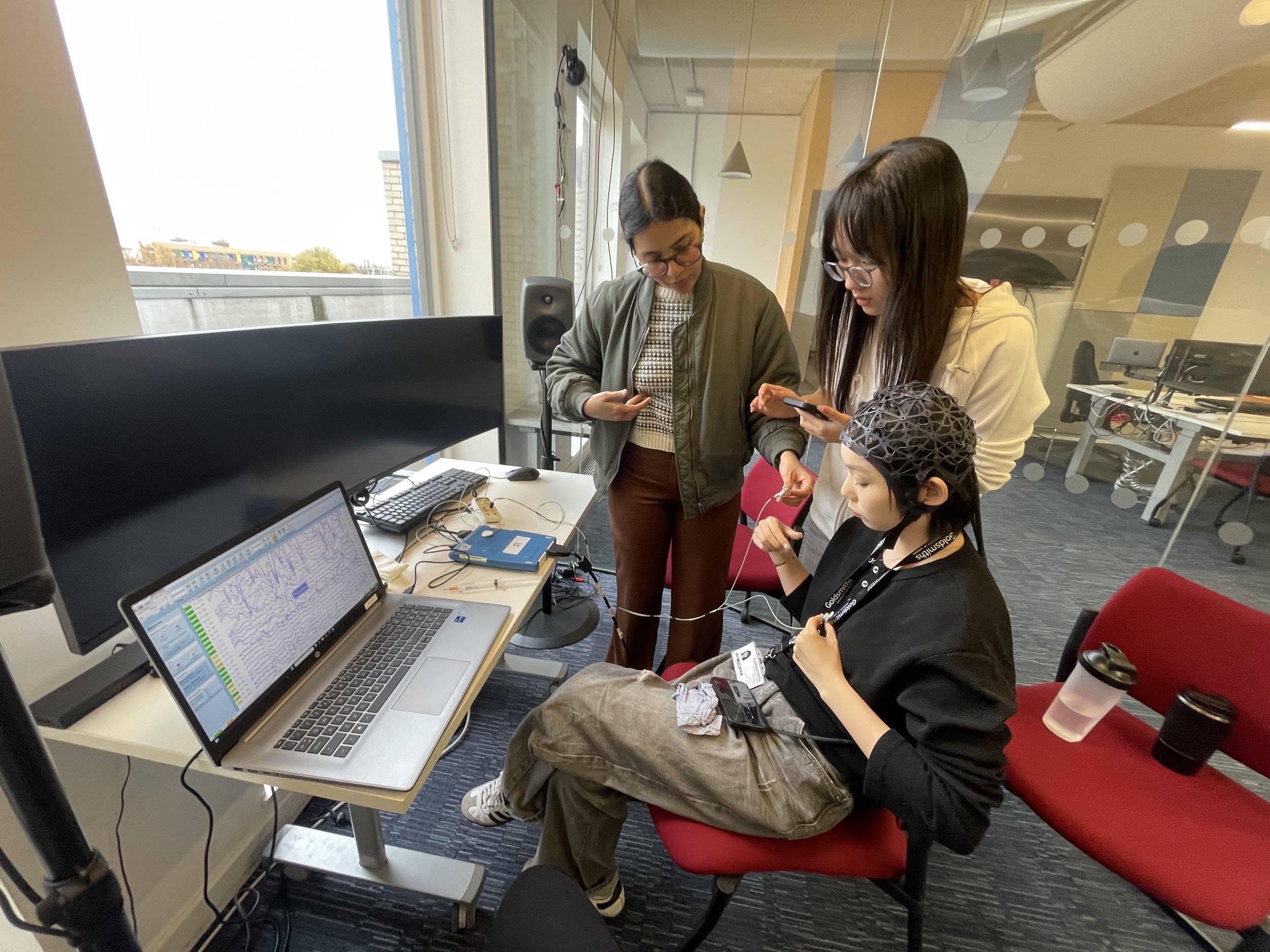EEG + HRV Insights:
UX for Mental States
Designing for Well-Being: Measuring Neural + Cardiac Responses to Restorative vs Stimulating Audio
PROJECT OVERVIEW
This biometric UX research study explored how two contrasting auditory experiences: guided meditation and upbeat music influence users’ neural activity and cardiac patterns, using EEG and heart rate variability (HRV) as core metrics.
THE GOAL
To uncover how emotional states correlate with interaction potential, and how these insights can guide the design of emotionally supportive digital products.
MY ROLE
• Codeveloped study design and research protocol
• Conducted pilot testing and led in-session data capture
• Collaboratively conducted EEG/HRV analysis and design implication mapping
• Translated biometric insights into UX strategies for well-being focused products
Research Question
How do restorative and stimulating experiences impact neural and physiological states, and what design strategies best align with those patterns to support user wellbeing and engagement?
Objectives
• Capture and compare EEG alpha, beta, and theta activity across conditions
• Track heart rate and HRV as indicators of arousal and regulation
• Identify emotional and attentional trends over time
• Translate findings into design principles for calm and energy oriented UX
METHODOLOGY
Participants: Millennial Grad Students
Sensors: EEG neurocap, ECG heart rate monitor
Conditions:
• Meditation: 5-minute guided session
• Upbeat music: 3-minute energetic audio track
Data Collection:
• Continuous EEG and ECG recordings
• Manual HRV and EEG band analysis (theta, alpha, beta)
DATA ANALYSIS HIGHLIGHTS
EEG Theta (Internal Attention)
Meditation: Progressive theta increase sustained internal focus
Music: Sharp early theta decline drop in engagement
EEG Alpha (Relaxation)
Meditation: Bellshaped rise and fall restorative calm
Music: Early stability sharp drop cognitive disengagement
EEG Beta (Cognitive Load)
Meditation: Low sustained beta minimal effort
Music: Moderate declining waning stimulation
ECG HR and HRV
Meditation: Slower HR, higher HRV calm, parasympathetic state
Music: Faster HR, lower variability transient arousal
KEY FINDINGS
• Meditation yields predictable calm state markers across EEG and HRV
• Music produces early engagement but rapid decline useful for short bursts
• Biometric data clearly differentiate restorative vs stimulating experiences
UX DESIGN IMPLICATIONS
Calm State UX
• Structure sessions to last 36 minutes to reach neurological “calm peaks”
• Use progress indicators to guide users to full benefit
• Remove visual noise: animations, badges, and alerts disrupt alpha/theta flow
• Maintain low complexity interfaces to preserve focus
Energizing UX
• Use short, highimpact microinteractions
• Introduce novelty pacing (timed visual/audio shifts) to hold engagement
• Avoid overstimulation design for arousal recovery balance
• Consider adaptive experiences driven by biofeedback (e.g., heart rate inputs)
REFLECTION
This study deepened my understanding of how physiological UX data can shape design choices that align with human emotional rhythms. It also demonstrated the feasibility of using lightweight biosensors to validate digital wellbeing strategies. Future iterations would automate HRV parsing and scale across more diverse user types.
Tools Used
• EEG neurocap, ECG monitor
• Meditation and music audio protocols
• Manual EEG/HRV visual inspection and annotation
• ASA Data Analysis Software
• Microsoft Teams
Ethical Note
All participants consented voluntarily. No identifying data was used. The study adhered to academic research standards and data privacy practices.


